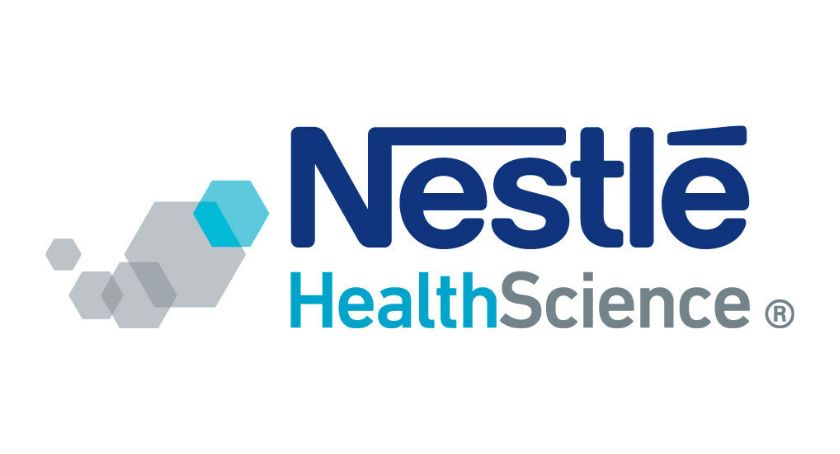Features
Personalized Nutrition: Current Knowledge & Implementation Possibilities
The potential for genetic testing and nutritional intervention are of great interest considering the astronomic cost of healthcare.
Personalized nutrition is the practice of adapting diet to meet nutritional needs of individuals or populations. Current personalization efforts are guided by the recommended dietary allowances (RDAs), often considered a “one-size-fits-all” approach to nutrition. In that sense, food personalization is not a new concept.
However, despite the contribution of RDAs to eliminating malnutrition and reducing the incidence of major illnesses, the global rise in chronic ailments such as diabetes, obesity, allergies and cardiovascular disease (CVD) calls for rethinking the RDA-based approach and adopting a new paradigm which considers genetic makeup and the impact of environment and lifestyle on health.
The unraveling of the human genome and subsequent emergence of “omics” sciences has confirmed that humans are individually unique and that response to nutritional and environmental influences can vary widely.
High-throughput technologies for analyzing genes (genomics), proteins (proteomics), metabolites (metabolomics) and mRNA (transcriptomics) have provided researchers with tools for explaining why different people respond differently to the same food or nutrient (nutrigenomics) and how individual genetic makeup predisposes people to dietary susceptibility (nutrigenetics).
Understanding the Genome
Sequencing of the human genome revealed not only fewer genes than expected, but also significant genetic heterogeneity within populations. It also turned out that DNA is a chemically inert building block and the information it contains can only be relevant when expressed as proteins via messenger RNA machinery.
Furthermore, the DNA is susceptible to various modifications; replacing a nucleotide with another, for example cytosine (C) with thymine (T), leads to the formation of single nucleotide polymorphisms (SNPs). Approximately 3.4 million SNPs have been detected throughout the human DNA, occurring once in every 300 nucleotides. Although not all SNPs are involved in diseases, differences in SNPs, and depending on their characteristics and location, are indicative of the presence of certain diseases or nutritional deficiencies—thus their use as markers.
For example, children with type 1 diabetes are known to have certain gene signatures, however, not all children with these same genes get the disease, which explains the contribution of environmental triggers to gene activation and onset of diseases.1 The role of SNPs has clearly been demonstrated in the development of phenylketonuria (PKU) and in diseases related to absorption and utilization of nutrients (iron, fatty acid oxidation, diabetes and metabolic syndrome, etc.).
Another type of event that can affect DNA, though without changing its sequence, is chemical modification via the addition of a single carbon (acetylation, methylation, phosphorylation). This step occurs at cytosine residues followed by guanines, causing the chromatin (complexes of DNA and histone proteins) to change its conformation as well as the gene’s activity and transcriptional status. These biochemical changes can last for a long period in life and can be transmitted from one generation to another.2
The Impact of Diet
It is now accepted that diet impacts gene expression directly or indirectly. Nutrients can cause DNA methylation, act as ligands for transcription factor (TFs) receptors and participate in metabolic pathways affecting signaling and gene expression. These functions are clearly pronounced in metabolically active organs such as the liver, intestine and adipose tissue.3 Despite the finding that diet of pregnant mothers can affect the DNA methylation pattern of their babies, a study on a large cohort of monozygotic twins showed that although their DNA methylation and histone acetylation were epigenetically indistinguishable during the early years of life, these modifications can diverge later, presumably due to environmental factors, thus affecting gene-expression patterns and susceptibility to diseases.4,5
Weight Loss
The puzzling observation that some people can maintain a healthy weight despite high consumption of sugar- and fat-loaded diets while others struggle to lose weight even on a sensible diet has prompted many investigations into the possible association of body weight with genetic makeup. It is estimated that more than 500 SNPs are directly or indirectly associated with obesity and about 25-70% of body weight variability is controlled by genes that affect energy homeostasis and modulation of nuclear transcription factors, signaling molecules and receptors as well as adipogenesis and fat deposition.6,7,8
Individuals susceptible to excessive fat gain often carry gene variants that influence appetite control (CNR1, NPY, POMC, MC4R, etc.), insulin signaling (ISR-2, INSIG2, GIPR) and inflammation (ADIPOQ, IL-6, RESISTIN, etc.). However, weight loss studies comparing the response to calorie restriction of individuals carrying obesity-related gene variants to those who did not was inconsistent.9,10
One explanation may lie in the polygenic and multifactorial nature of obesity. The Trans-National Institutes of Health (NIH) Working Group on Obesity conducted a large study in an effort to understand how genes affect body weight, both at behavioral and biological levels. Findings indicated that subjects with a certain allele on the MTIF3 gene may be more likely to achieve weight-loss success through intensive lifestyle interventions with a focus on diet and physical activity, while those with a specific FTO variation may achieve greater weight loss following bariatric surgery.11
Aging
The role of diet in slowing down aging has been the subject of several investigations in both animals and humans. McKay et al. proposed that calorie restriction without malnutrition is the only environmental stimulus known to positively interfere with the aging process by alternating levels of miRNA.12 These miRNAs have also been associated with cancer, neurodegenerative, cardiovascular and inflammatory disorders, which are all pathologies associated with aging. Similar conclusions were reported by Dhabhi et al. in a study on young and old mice confirming the role of circulating 48 age-related miRNAs and their possible reversal by calorie restriction.13 A recent study by Ortega et al. on patients suffering from morbid obesity concluded that diet restricting weight loss and gastric bypass did not show the same effect on circulating miRNAs.14
Similar correlations between lifespan and reduced calorie intake were reported in C. elegans and S. cerevisiae and mice.15,16 Restriction on intake of the amino acid methionine was proposed to be important for countering oxidative damage and reducing signaling through longevity regulators such as the IIS–insulin/insulin-like growth factor IGF-pathway.17 This mechanism may imply a greater role for proteins beyond maintaining body mass and metabolic functions and potentially as intermediaries in biosynthetic pathways. Yeast lifespan extension via resveratrol supplementation was proposed to be due to activation of the longevity gene SirT1, the same gene associated with longevity mediated by calorie restriction.18
Vitamin Deficiency
One of the main causes of vitamin B12 deficiency is mutation in the GIF gene, which reduces the body’s ability to produce intrinsic factor required for absorption of the vitamin from the diet. A study by Oh and Brown demonstrated that people with this gene mutation can still benefit from vitamin B12 supplementation if presented at much higher concentrations to force absorption of the vitamin via passive diffusion.19
Similarly, folate deficiency was shown to be due to specific genes involved in the production of enzymes responsible for folate uptake and bioavailability.20 A recent study on mice showed that early life folate depletion affected epigenetic markings. This effect was not modulated by post-weaning folate supply and altered epigenetic marks persisted into adulthood.21 Folates are important methyl donors and alterations in supply of this vitamin may affect the availability of methyl groups for DNA methylation, thus higher folate intake may be necessary for persons who carry this gene.
Cancer Risk
Fok1 is a gene variant of vitamin D receptors (VDR) associated with asthma and increased risk of colorectal cancer.22 Low consumption of calcium and a high-fat diet in subjects with this gene variant may double their risk of colorectal cancer. Green tea containing epigallocatechin gallate (EGCG) was found to reduce the risk of breast cancer via reduced signaling of the phosphatidyl inositol 3-kinase-NF-kB pathway.23
Contribution of the Mediterranean diet (MD) to reduced risk of breast cancer was demonstrated in a study on Greek-Cypriot women.24 MD is rich in beneficial one-carbon metabolism micronutrients, which are suspected to protect against breast cancer via increasing the number of variants of MTHFR and MTR genotypes.
Other Examples
Phytosterols consumption by individuals with mutations in the ABCG5/G8 proteins, a known genetic disorder, can lead to significant elevation in phytosterols concentrations in the blood and the development of atherosclerosis.25 Efficacy of phytosterol therapy depends, at least in part, on the modulation of the CYP7A1 gene expression. In C57/BL6 mice, the administration of a plant sterol blend was found to reduce hepatic and plasma triacylglycerol concentrations, but not plasma cholesterol.26 These factors may explain the recent questions about phytosterols ineffectiveness.
Polyunsaturated fatty acids (PUFAs) are currently incorporated into many food products. However, little is known about the role of the genome in the body’s ability to make use of this class of nutrients. A recent study by Pihlajamaki et al. showed that individuals with the Pro12Pro genotype are more likely to benefit from a PUFA-enriched diet.27 A clinical trial on 40 patients with type 2 diabetes mellitus (35-68 years) showed that consumption of probiotic soy milk (PSM) can decrease promoter methylation in proximal and distal MLH1 promoter region, indicating a possible role for PSM in diabetes management.28
Researchers at the Johns Hopkins Children Hospital suspected that the prevalence of asthma, food allergies and eczema may be due to a “genetic glitch.” A large Danish study comparing the genome of allergy sufferers and non-sufferers found variations in 10 specific sites, confirming that in addition to environmental factors, genes are crucial for vulnerability to allergic reactions. These same genes have also been associated with the development of autoimmune diseases such as inflammatory bowel disease, type 1 diabetes and sclerosis.29 The controversial role of vitamin D in the development of allergies in children has also been demonstrated in a large cohort study (8,000 children), which suggested that formula-fed children who were given multivitamin preparations the first 6 months of their lives may have increased their risk to food allergies.30
Genetic Motivation
Will genomic information motivate consumers to modify their diet? To answer this question, a 2014 randomized study was conducted on 138 healthy young adults who disclosed their intake of caffeine, sodium, vitamin C and sugar.31 Participants were split into control and intervention groups. In the intervention group, individuals were genotyped for variants that affect caffeine metabolism (CYP1A2), vitamin C utilization (GSTT1 and GSTM1), sweet taste perception (TAS1R2) and sodium-sensitivity (ACE), and were provided with DNA-based dietary advice for each of these dietary components while the control group was given standard dietary advice but no genetic information.
After 3 months, participants who were informed that they carried a version of a gene linked to salt intake and high blood pressure initiated diet modification; after 12 months, they permanently reduced their sodium intake according to recommendations. The control group received only standard advice for sodium intake. The authors concluded that DNA-based dietary advice can be very useful and understandable compared to general population-based dietary recommendations, and would provide people with more motivation to change their diet.
Compliance with genome-based dietary information was also investigated by Dr. M. Krag with the University of Copenhagen by following diabetic patients (men and women) over a period of 13 years.32 The study found that diabetic women given structured personal care (SPC) were 26% less likely to die of any cause and 30% less likely to die of diabetes-related causes compared to those given routine care.
Women in the SPC group were also 41% less likely to suffer a stroke and 35% less likely to experience any diabetes-related endpoint, though outcomes were not statistically significant. In men, none of these differences were seen between the SPC and routine care points. Differences between genders were statistically significant for all-cause mortality and diabetes-related death. The researchers concluded that the improved outcomes in women may be explained by complex social and cultural issues of gender.
Product Development
Can personalized nutrition be translated into new products? The current functional food market is guided by empirical nutritional recommendations (RDAs) targeting a broad group of consumers in the absence of any nutrigenomic considerations. The success of “true” personalized nutrition can only be achieved if the food/nutrition industry incorporates sound scientific data into a viable business model.
Consumer studies indicate that early adopters of consumer genetic testing are more likely to be highly educated with a substantial proportion of users between the ages of 18-49 years.33 It is imperative that the personalized nutrition industry avoids the GMO trap where genetic technology has been focused exclusively on producing low-cost food ingredients with no unique nutritional features and often targeting the wrong application, such as infant formulas. This practice led to consumers’ perception of GMO as highly replaceable and morally questionable technology.34
In a survey of 452 randomly selected German participants, designed to evaluate their acceptance of genetic risk profiling, results showed 45% of participants expressed interest in undergoing genomic testing and obtaining personalized nutrition advice; 40% of those sampled showed willingness to buy the proposed functional food products, leading to the conclusion that personalized nutrition is a promising concept.35
In an effort to analyze the opportunities and challenges in personalized nutrition, the European Food4Me project
(www.food4me.org) studied consumer behavior in nine European countries and found that people were willing to pay for a variety of personalized nutrition services. They also estimated that personalized nutrition advice could cost between €40 and €400. Data suggested that if this concept appealed to just 10% of the European population, market value of personalized nutrition would be worth €6-18 billion.
The commercial success of personalized nutrition depends on two main factors: 1) availability of sound and actionable genetic testing, and 2) the development of special food products that are convenient, affordable and good tasting while avoiding the perception of diet “medicalization.”
Advances in discovery technologies using a variety of phenotypic analyses have been critical to detecting genetic disorders at the gene, protein and metabolite levels, and to differentiate dietary responders from non-responders. Deficiencies in certain nutrients, however, may have several implications and manifestations, thus presenting an additional challenge. A combination of many genomic-based data may be necessary to detect the full metabolic effect of dietary intervention and/or to find relevant nutritional biomarkers.
Recent discovery of saliva-based genetic biomarkers will no doubt provide convenient and consumer-friendly genetic testing tools. Currently, many Internet-based companies offer direct-to-consumer genetic tests often accompanied with follow-up nutritional advice either directly to the consumer or via general practitioners. In-home genetic testing still faces some regulatory obstacles; the FDA considers these kits as medical devices that thus require pre-market approval.
In the early 2000s, General Mills, Inc. pioneered a personalized nutrition program where consumers, depending on their own “health status assessment” can order a breakfast cereal product with their choice of nutrients such as vitamins, minerals, etc. However, the program was shortly deemed commercially non-viable due to the multitude of fortification possibilities and complicated logistics.
Recently, the food giant Nestlé launched a new personalized nutrition initiative, which promises to offer tailored nutritional supplements specific to individual needs. Nestlé plans to create a nutrient profile or unique fingerprint with information on deficiencies or excesses where individuals can check their “nutrient number,” an approach similar to what is currently used for cholesterol or triglycerides.
Nestlé envisions feeding the data into a machine that will create tailored foods or supplements with the right levels of nutrients delivered as a powder in a capsule, similar to Nespresso coffee. Success of this approach will largely depend on finding efficient and cost-effective tools that allow creating consumer nutritional profiles and the company’s ability to offer a diverse range of personalized diet options.
Conclusions
Nutrigenetic and nutrigenomic research platforms have provided evidence for establishing the correlation between health and genetic makeup, as well as the role of environment in determining susceptibility to diseases. Genomic testing and the possibilities of diet personalization and nutritional intervention are currently of great interest to both individuals and healthcare professionals considering the astronomic cost of healthcare in the developed world. The World Health Organization estimated healthcare spending at $387.3 billion in the U.S. (17.9% of GDP). This new unchartered approach to nutrition should also be conducted in a way to ensure privacy of individuals’ genetic information and should always be accompanied by subsequent nutritional advice.
Jamileh Mary Lakkis, PhD, has more than 20 years of experience in the food and nutrition industry. She is currently overseeing projects for the development of personalized nutrition diets targeting individuals with cardiovascular diseases. For more information: jmlakkis@gmail.com.
References
- Hadley et al. 2015. Diabetes, 64(5): 1818
- Junien et al., 2006. J. Inherit. Metab. Dis. 29: 359-365
- Afman and Muller, 2006. J. Am. Diet. Assoc. 106: 569-576.
- Heijmans et al., 2008. Proc. Natl. Acad. Sci. USA, 105: 17046.
- Fraga et al. 2005. Proc. Natl. Acad. Sci. USA 102: 10604-10609
- Amberger et al. 2014. Nucleic Acid research (doi: 10.1093/nar/gku1205).
- Day and Loos, 2011. J. Nutrigenetics and Nutrigenomics, 4: 22.
- Martinez, 2014. J. Nutrigenet. Nutrigenomics, 7: I-III.
- Abete et al. 2012. Prog. Mol. Biol. Transl. Sci. 108: 323-346.
- San Cristobal et al., 2013. J. Acad. Nutr. Diet, 113: 1447.
- Bray et al. 2016. Obesity, 24: 14-22.
- Mckay et al. 1989. Nutrition, 5(3): 155.
- Dhabi et al. 2013. Aging, 5(2): 130.
- Ortega et al. 2013. Clin. Chem. 59(5): 781.
- Steffen et al., 2010. Gene and Nutrition, 5: 183.
- Naudi et al. 2014. J. Anim. Sci. 92(11): 4998.
- Troen et al., 2007. Age 29:29.
- Lekli et al. Genes and Nutrition, 5(1): 55. Affiliated with Cardiovascular Research Center, University of Connecticut School of Medicine
- Oh and Brown, 2013. Am. Fam. Physician, 67: 979.
- Duthie et al. 2015. Gene and Nutrition, 10: 446.
- McKay et al. 2011. Genes and Nutrition, 62(2): 189.
- Stove, 2006. Am. J. Clin. Nutr, 83(2): 436S-442S.
- Pianetti et al. 2002. Cancer Research, 62(3): 652.
- Kakkoura et al. 2015. Genes and Nutrition, 10:5.
- Izar et al. 2011. Genes and Nutrition, 6(1): 17.
- Rideout et al., 2010. Mol. Nutr. Food Res. 54, Suppl 1: S7.
- Pihlajamaki et al. 2015. Genes and Nutrition, 10: 43.
- Hariri et al. 2015. Genes and Nutrition, 10: 52.
- Bønnelykke et al. 2013. Nature genetics, 45: 902.
- Milner et al. 2004. Pediatrics 114(1): 27.
- Nielsen and El-Sohemy, 2014. PLOS One, 4(11): e112665.
- Krag et al. 2016. Diabetologia, 59(2): 275.
- Gollust et al., 2012. Public Health Genomics 15: 22.
- Sjöberg, L. 2004. SSE/EFI Working paper series in Business administration, No. 2004:7, Stockholm School of Economics.
- Roosen et al., 2008. Int. J. Vitamin Nutr Res., 78(6): 269.





















